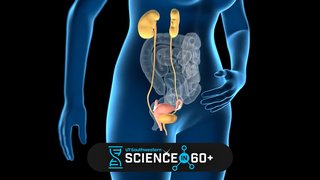Hysterectomy alternative: An innovative treatment for uterine fibroids
December 1, 2025
Many women today have heard about uterine fibroids. These benign growths in the uterus affect up to 80% of women by age 50. About half of them might experience related health problems, such as abdominal pain, bulky discomfort, bleeding, and iron-deficiency anemia.
Historically, treatments for uterine fibroids have focused on eliminating the growths. While effective, some of these treatments may not the best choice for women who want to become pregnant in the future or want to keep their uterus.
One of the latest innovations is radiofrequency ablation (RFA), a minimally invasive procedure that reduces the volume of fibroid growths without damaging healthy reproductive tissue.
UT Southwestern is among a handful of medical centers in North Texas to offer RFA, which uses advanced technology to heat and shrink uterine fibroids. RFA is a safe, outpatient treatment option for women who want to avoid major surgery. Compared to myomectomy or hysterectomy surgeries, RFA treatment typically allows women to return to regular activities within days instead of several weeks.
How radiofrequency ablation works
A healthy uterus is about the size of a fist – large fibroids can stretch it to the size of a full-term pregnancy. RFA is a volume-reduction procedure. The goal is not to eliminate the fibroids but to shrink them by 40% to 50%.
RFA is a minimally invasive procedure that can be done transcervically (through the vagina without incisions) or laparoscopically (with small abdominal incisions).
- For transcervical RFA, we use Sonata technology – a real-time ultrasound guidance system that helps target the fibroid growths. The surgeon slides a slender probe that resembles a hair straightener into the vagina, past the cervix, and into the uterus. The surgeon releases the radiofrequency energy directly onto and around the growths, minimizing damage to surrounding tissues. This is a good approach for growths that are shorter than 7 centimeters (2.7 inches) and are not attached to surrounding tissue in an unusual manner.

- Laparoscopic surgery is a good option for fibroids that are not accessible through the cervix and that are shorter than 9 centimeters (3.5 inches). For the procedure, we use a laparoscopic ultrasound to visualize the inside of the uterus and map out the locations of fibroids. Then, through laparoscopic or “keyhole” incisions in the patient’s abdomen that are less than a half inch long, we individually heat the fibroids with targeted energy, sparing the healthy uterine tissue around each growth.
RFA shrinks the tough, fibrous tissue that disrupts the muscle wall of the uterus, reducing disruptive symptoms. Over three months, the fibroids will become soft, marshmallow-like remnants on the uterine wall.
Most patients recover fully within a week or two – no hospital stay is required – and most women return to work and regular activities three to five days after the procedure.
For many women, uterine fibroids require a combination of treatments. Some take over-the-counter or prescription medication to help manage discomfort during the debulking period. Others benefit from symptom-specific therapies such as iron infusions for anemia or medication for urinary urgency. RFA can also be effective in helping to reduce symptoms.

Are you a candidate for radiofrequency ablation?
To discuss if you are a candidate for radiofrequency ablation or to learn about other options, schedule an appointment with one of our gynecologists. Call 214-645-3888 today.
Symptom relief after the procedure
Some women recall their aunt, mother, or grandma talking about uncomfortable “bulk symptoms” such as nighttime bleeding or painful intercourse. They assumed it was just a part of growing older, but that’s not the case.
Getting treatment to reduce the volume of fibroids allows the uterus to return to a more normal size, providing relief from symptoms such as:
- Flooding: A sudden, heavy stream of blood that can overflow pads and stain your clothes. This often happens overnight.
- Constipation: Infrequent or difficult bowel movements due to pressure on the intestines from the expanding uterus.
- Iron-deficiency: Anemia can develop due to heavy bleeding over time.
- Painful intercourse: Feeling bulky in the abdomen, as well as pressure on the uterus, bowels, or bladder, can make having sex uncomfortable.
- Urinary problems: When fibroids fill the uterus and press it against the bladder, it can cause urinary urgency, frequency, and even retention – when urine can’t come out easily.
How to choose the best fibroid treatment for you
UT Southwestern fibroid experts personalize treatment plans for each patient. If your fibroids do not cause symptoms, there may be no need for treatment. However, disruptive symptoms can become normalized over time, so be honest with yourself and your doctor about your experiences and quality of life.
If you choose to get uterine fibroid treatment, the first step is a consultation to discuss your symptoms and medical history. After that, we will do pelvic imaging to determine the size and location of your fibroids, which will help us recommend treatment options that fit your condition and future plans.

Sometimes, women delay care because they believe a hysterectomy is their only option. That’s no longer the case. Along with RFA, there are several fibroid treatment options women can consider:
- Medication
- Myomectomy to remove the fibroids
- Uterine fibroid embolization procedure to starve the growths of blood
- MRI-guided focused ultrasound
- Hysterectomy – a surgery to remove the entire uterus, which can be curative for women who don’t want to become pregnant in the future
A few considerations
While RFA can help some women control uterine fibroid symptoms without hysterectomy, the treatment is not yet approved for fertility preservation by the Food and Drug Administration. Not all insurance companies will cover the cost of RFA.
Healthy, full-term pregnancies after RFA have been reported. Researchers are continuing to collect data and provide a more thorough assessment of how the treatment affects fertility. In fact, UT Southwestern researchers are involved in a study to follow these long-term outcomes.
Since there is no evidence of disruption of the blood supply to the uterus or ovaries, data suggest there is not likely a risk of early menopause with RFA. However, patients continue to be monitored after treatment.
When you are ready to live free of disruptive uterine fibroid symptoms, talk with a specialist about your options. There are many safe, effective treatments that can significantly reduce or eliminate your symptoms, on your own terms.
To talk with an expert about uterine fibroid radiofrequency ablation, make an appointment by calling 214-645-3888 or request an appointment online.











